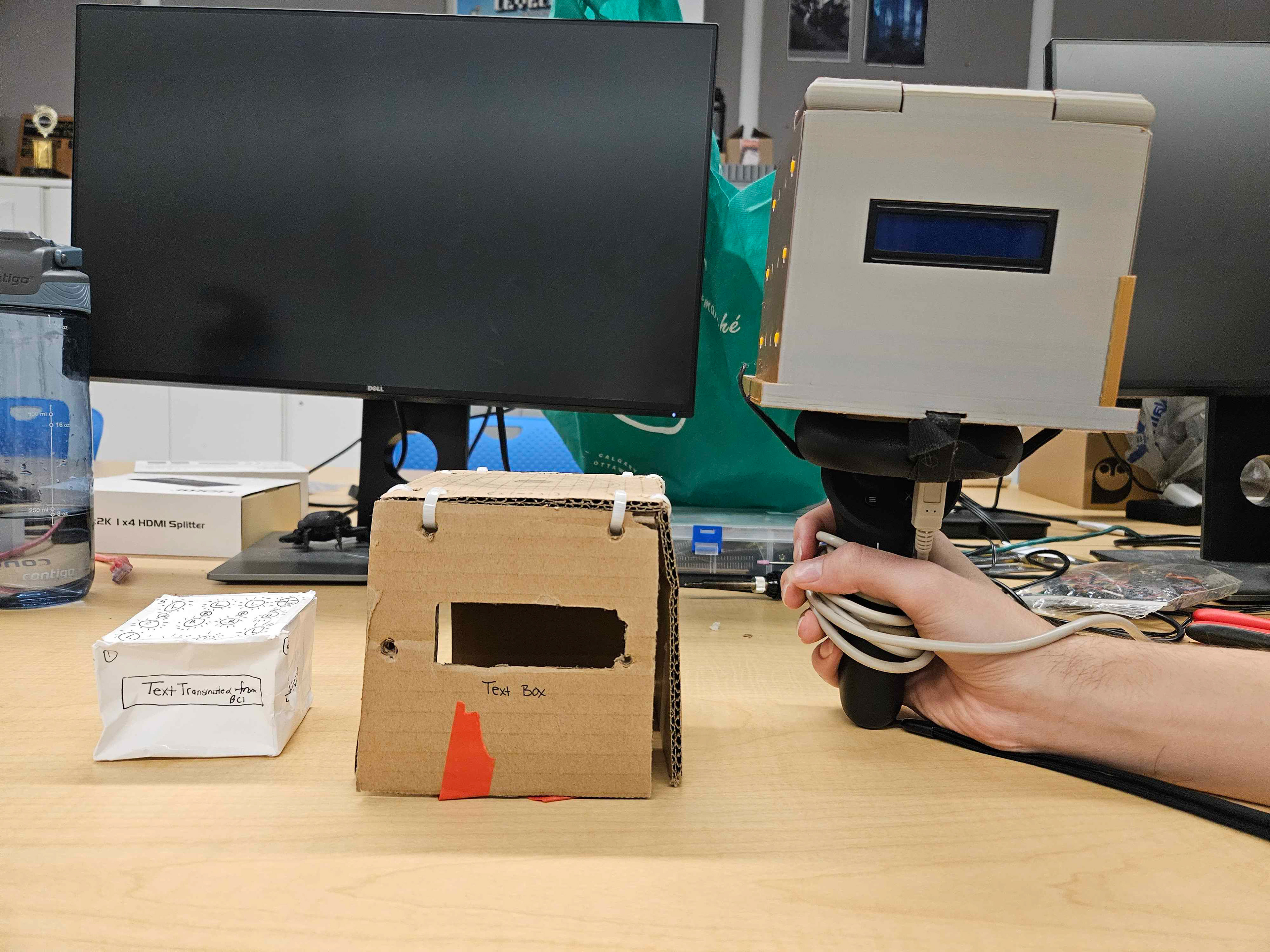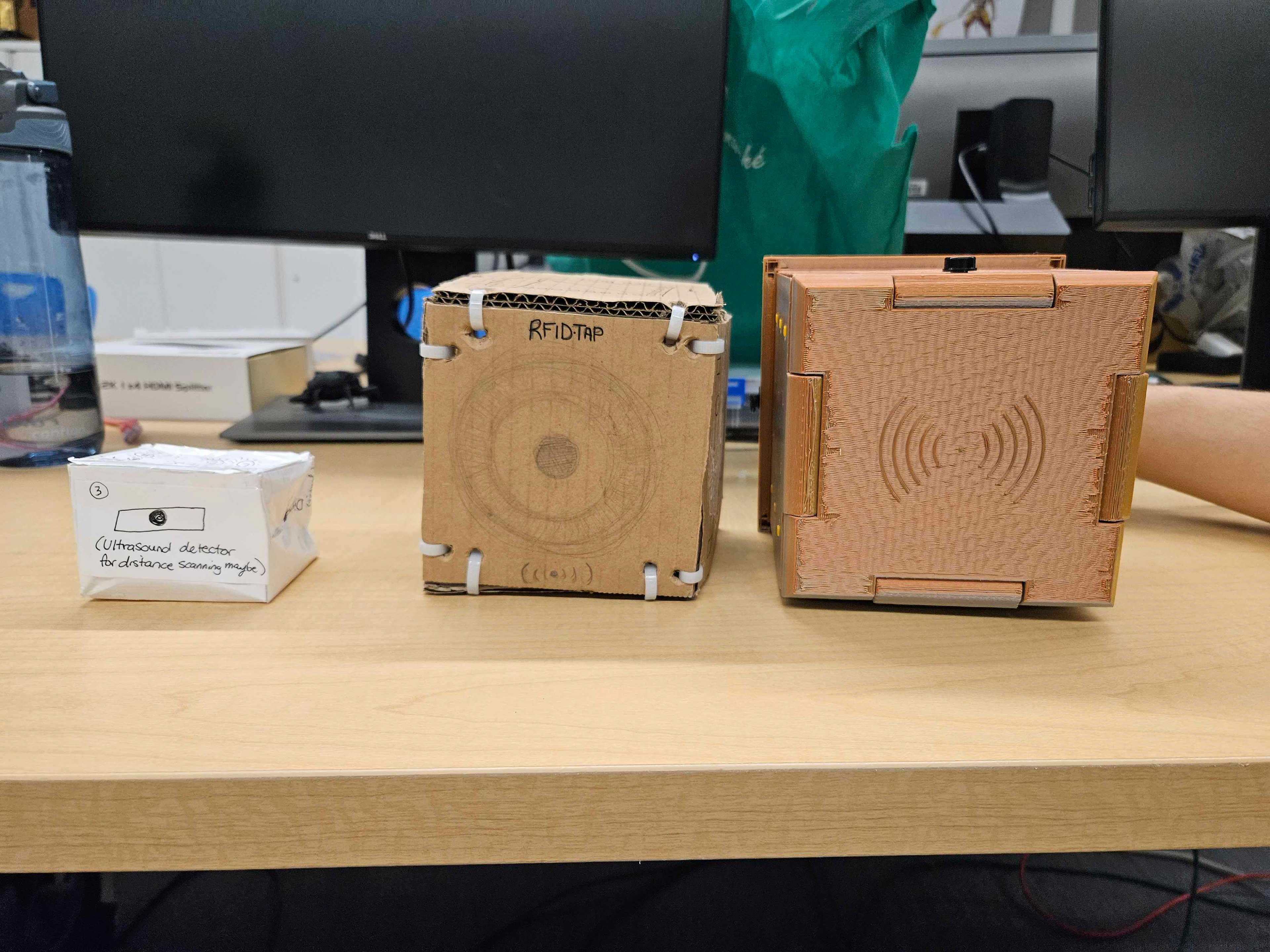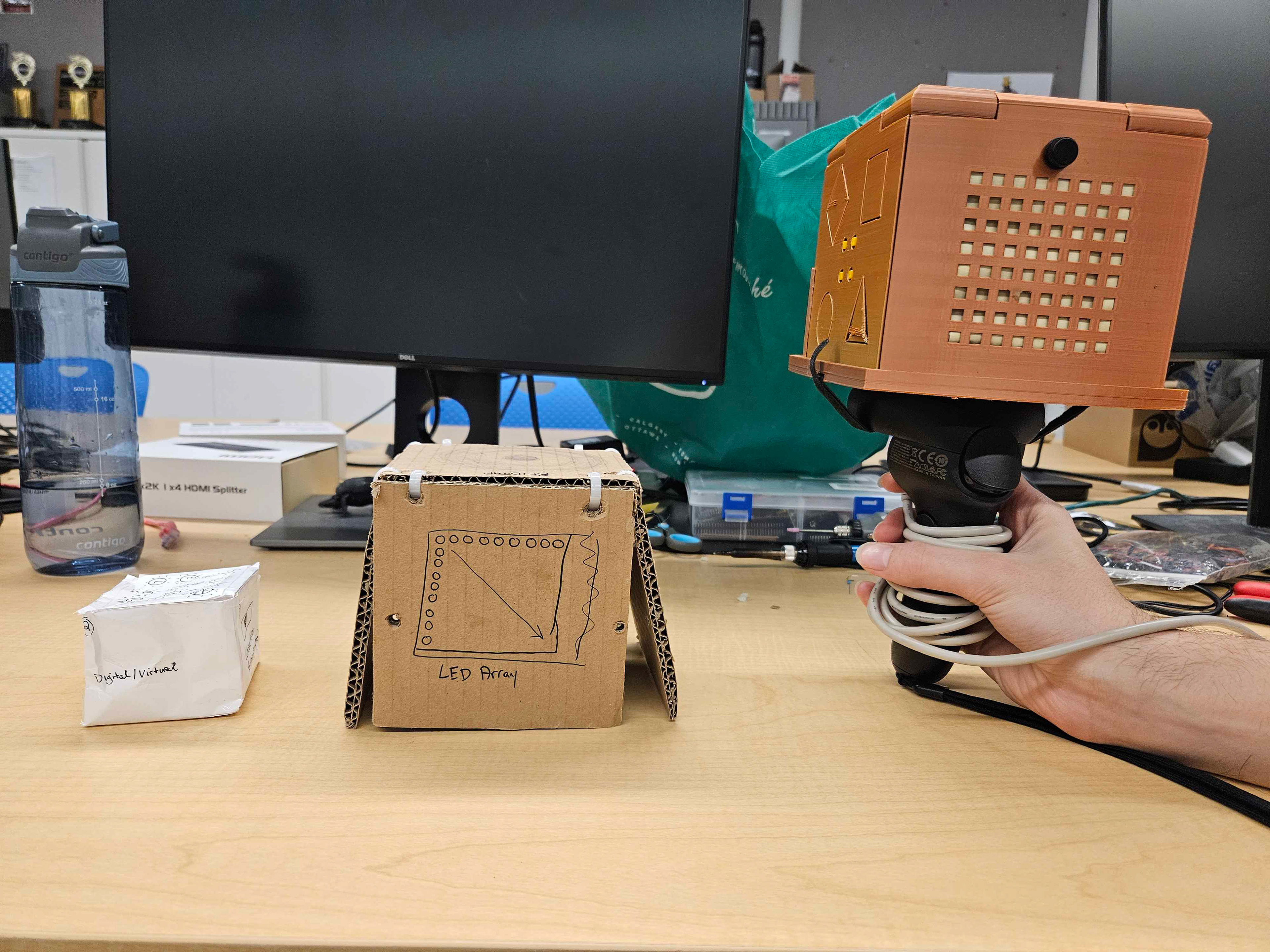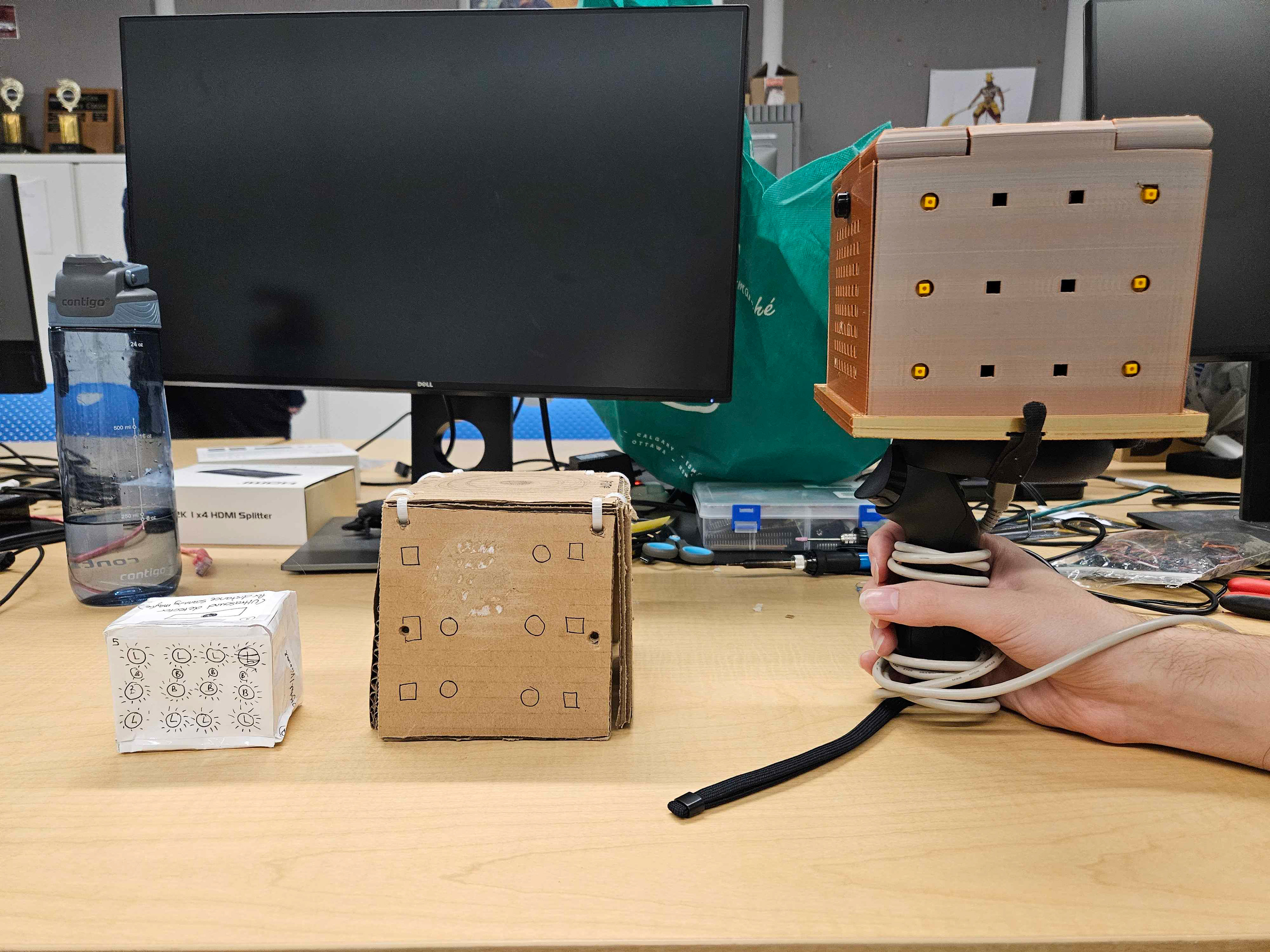ThinkBox
A project by Lauren Olivier, Michael Quecano, and Lucas Abramczuk
ThinkBox is the result of four months of rapid prototyping and collaboration between three passionate developers driven by a shared goal: to create a game that challenges how players communicate (and, admittedly, to pass our class)
ThinkBox is a two-player asymmetric puzzle game inspired by "Keep Talking and Nobody Explodes". Two players must work together to solve communication-based puzzles - each from a different perspective. Player 1 interacts with a physical cube equipped with buttons, symbols, an RFID card reader, and a small LEC screen, while Player 2 navigates a digital replica of the same cube in VR. Both cubes are synced via a gyroscope, ensuring both players always know which side is being referenced.
ThinkBox is a two-player asymmetric puzzle game inspired by "Keep Talking and Nobody Explodes". Two players must work together to solve communication-based puzzles - each from a different perspective. Player 1 interacts with a physical cube equipped with buttons, symbols, an RFID card reader, and a small LEC screen, while Player 2 navigates a digital replica of the same cube in VR. Both cubes are synced via a gyroscope, ensuring both players always know which side is being referenced.
The twist? Player 1 can ask questions, but Player 2 cannot. Instead, Player 2 uses a limited communication system: selecting responses on a digital keyboard using VR eye-tracking. These messages are sent to Player 1's cube and displayed on the LED screen. To succeed, players must find creative ways to collaborate under these communication constraints, using logic, observation, and clever questions to complete the puzzles together.
By blending tangible interaction with neuroadaptive technology, ThinkBox explores how physical, digital, and unique interfaces can come together to create cooperative, unique, and thought-provoking experiences.
By blending tangible interaction with neuroadaptive technology, ThinkBox explores how physical, digital, and unique interfaces can come together to create cooperative, unique, and thought-provoking experiences.
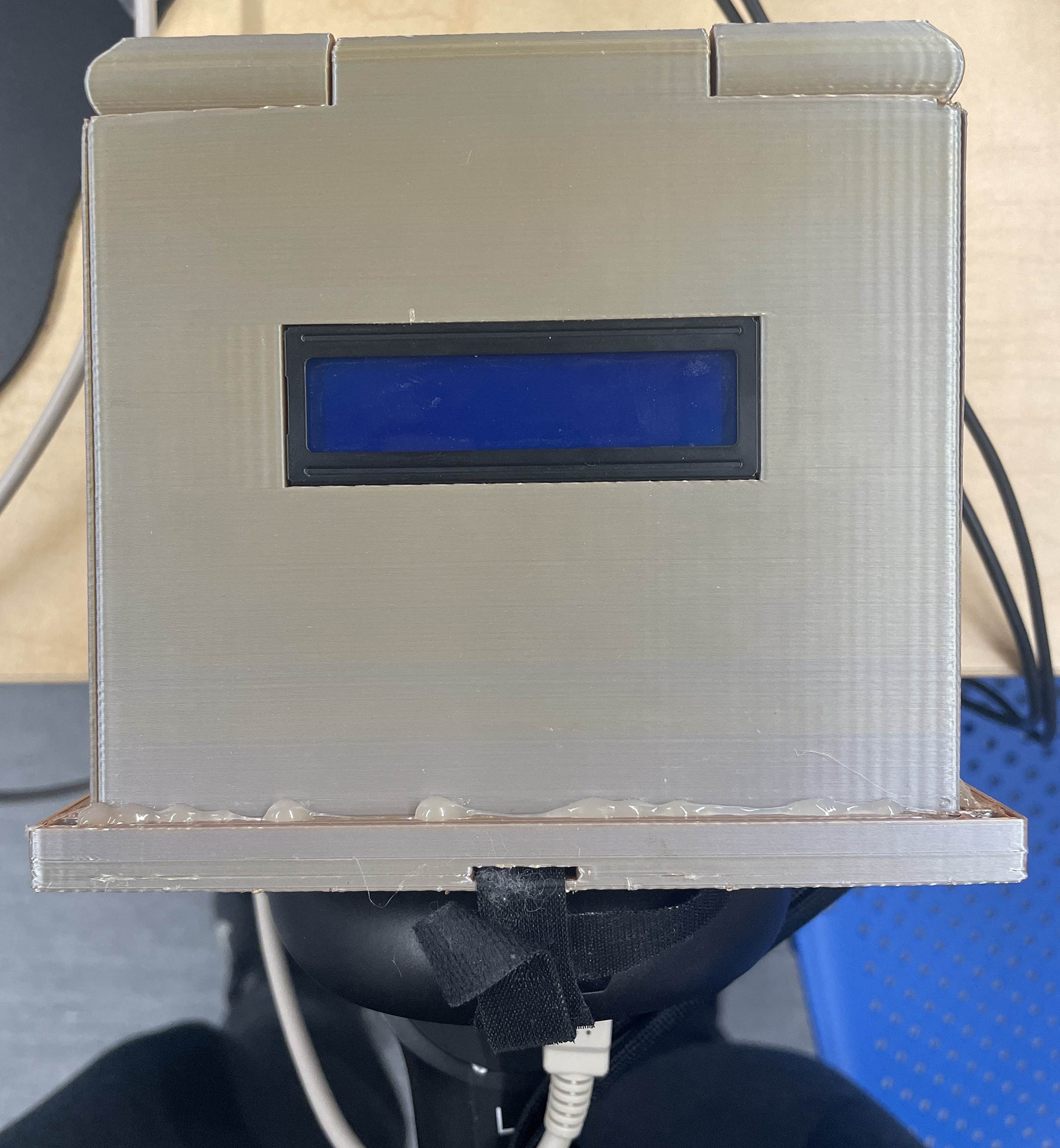
Side 1 - LED Screen
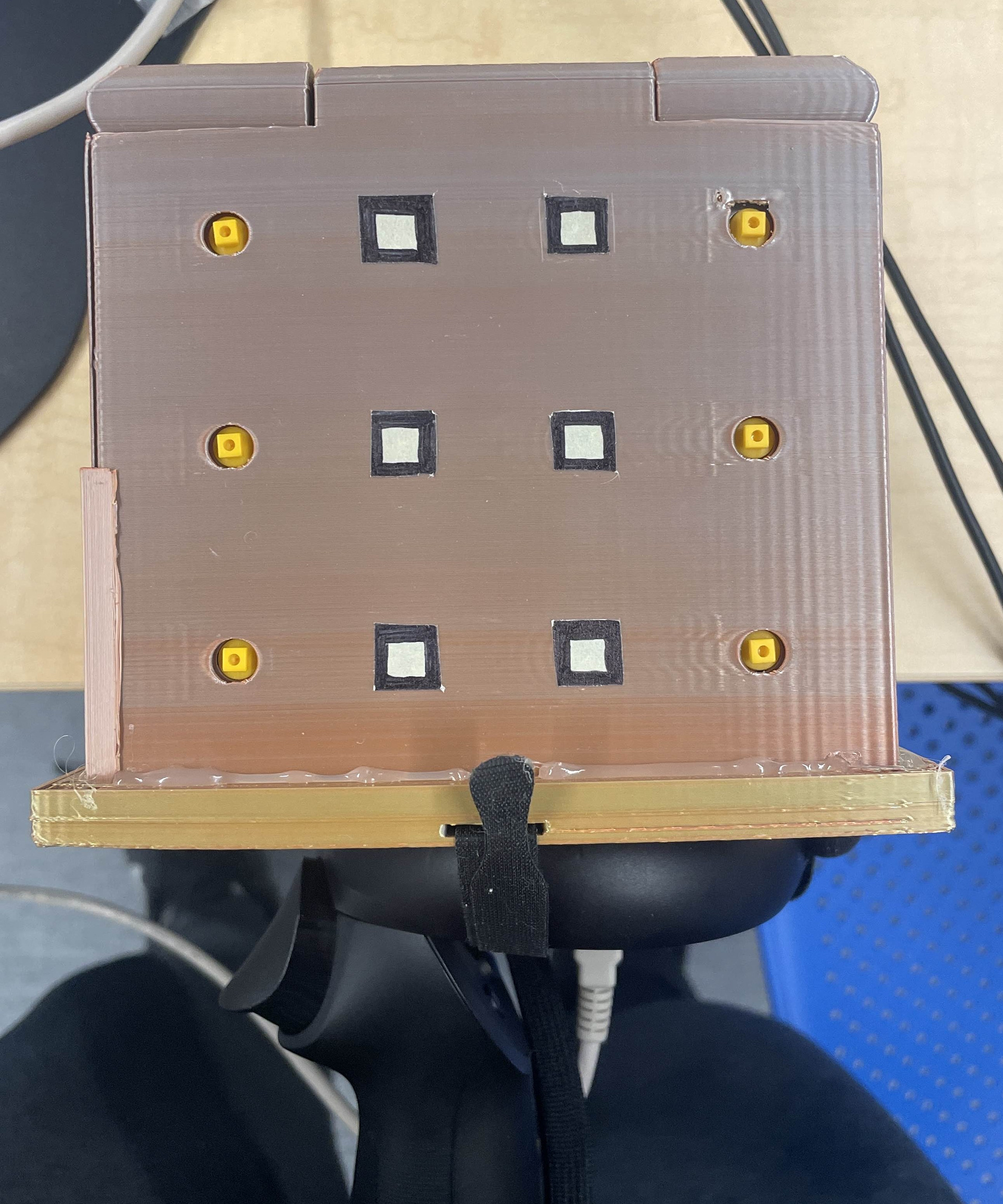
Side 2 - Puzzle A: LED Matching

Side 3 - Puzzle B: LED Array (Animal Icon Puzzle)
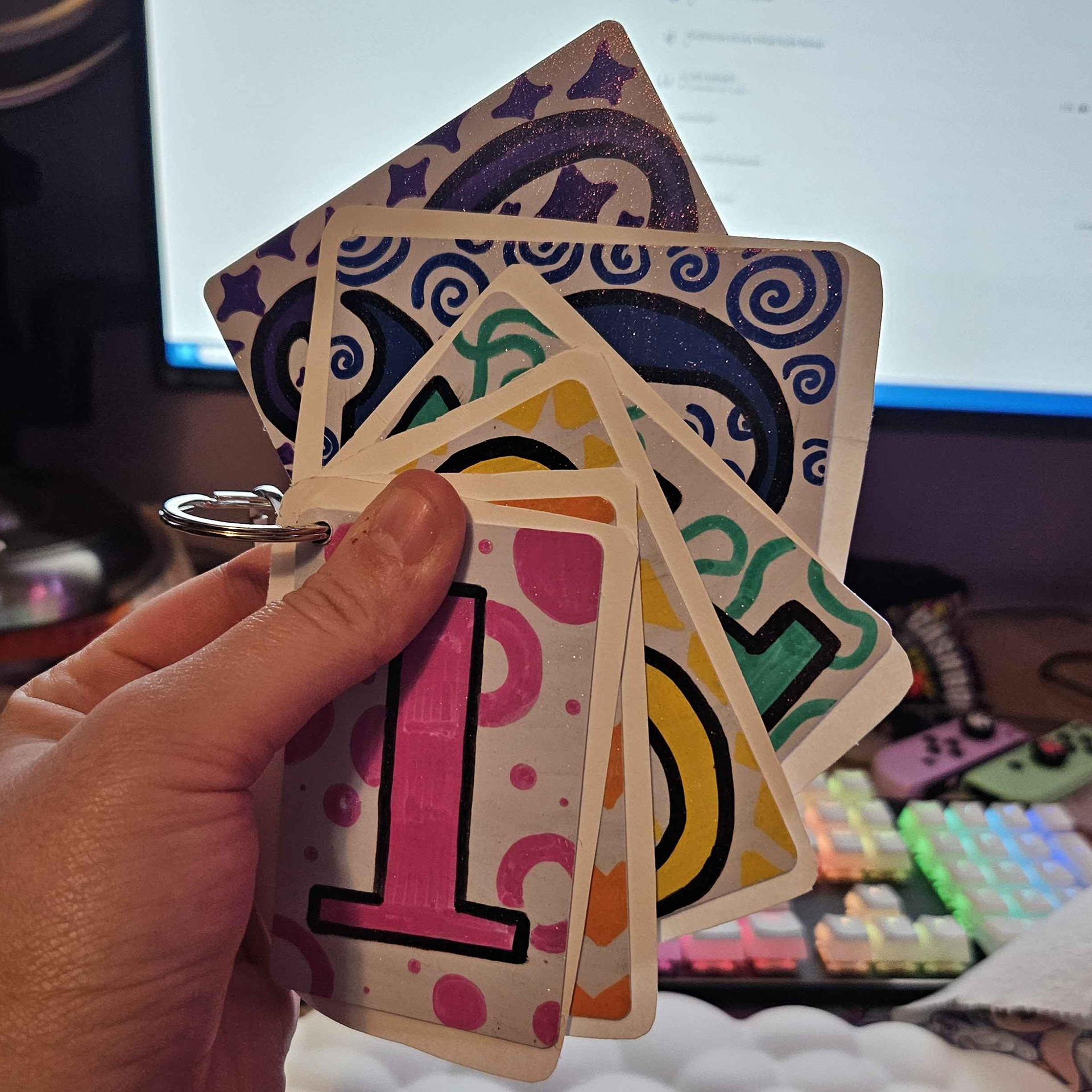
RFID Cards - Puzzle B
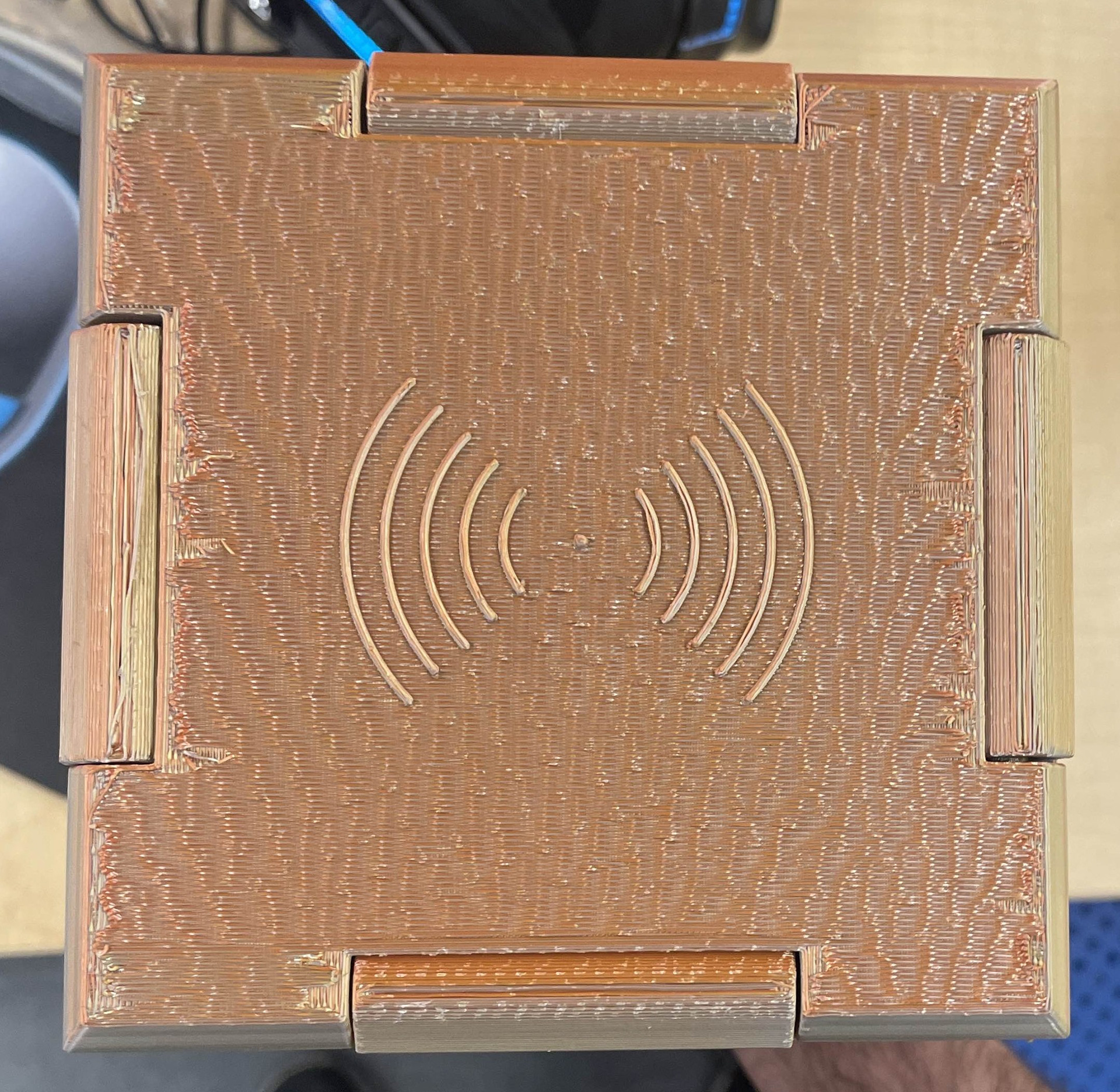
Side 4 - Puzzle B: RFID Card Scanner
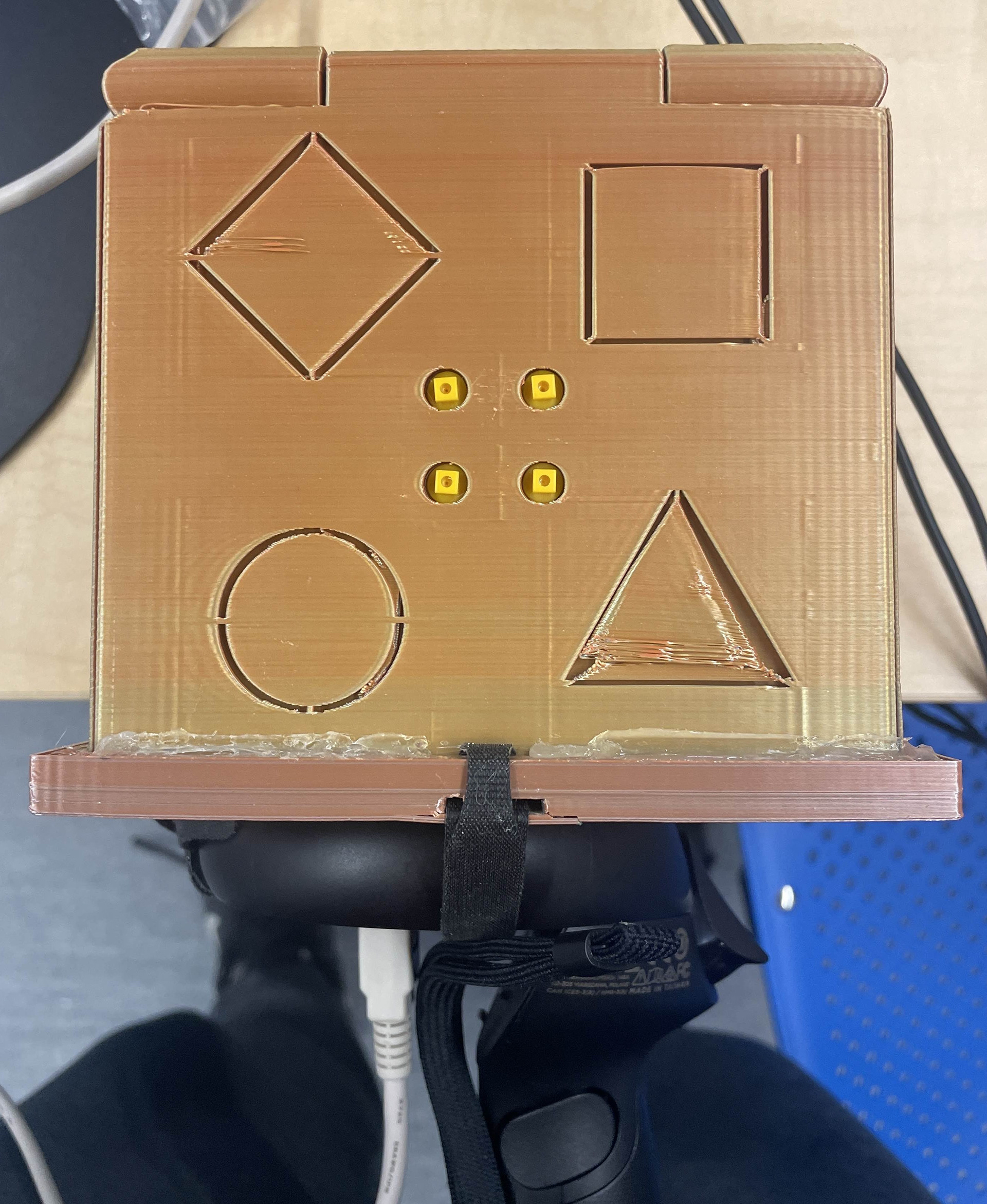
Side 5 - Puzzle C: Symbol Sequence
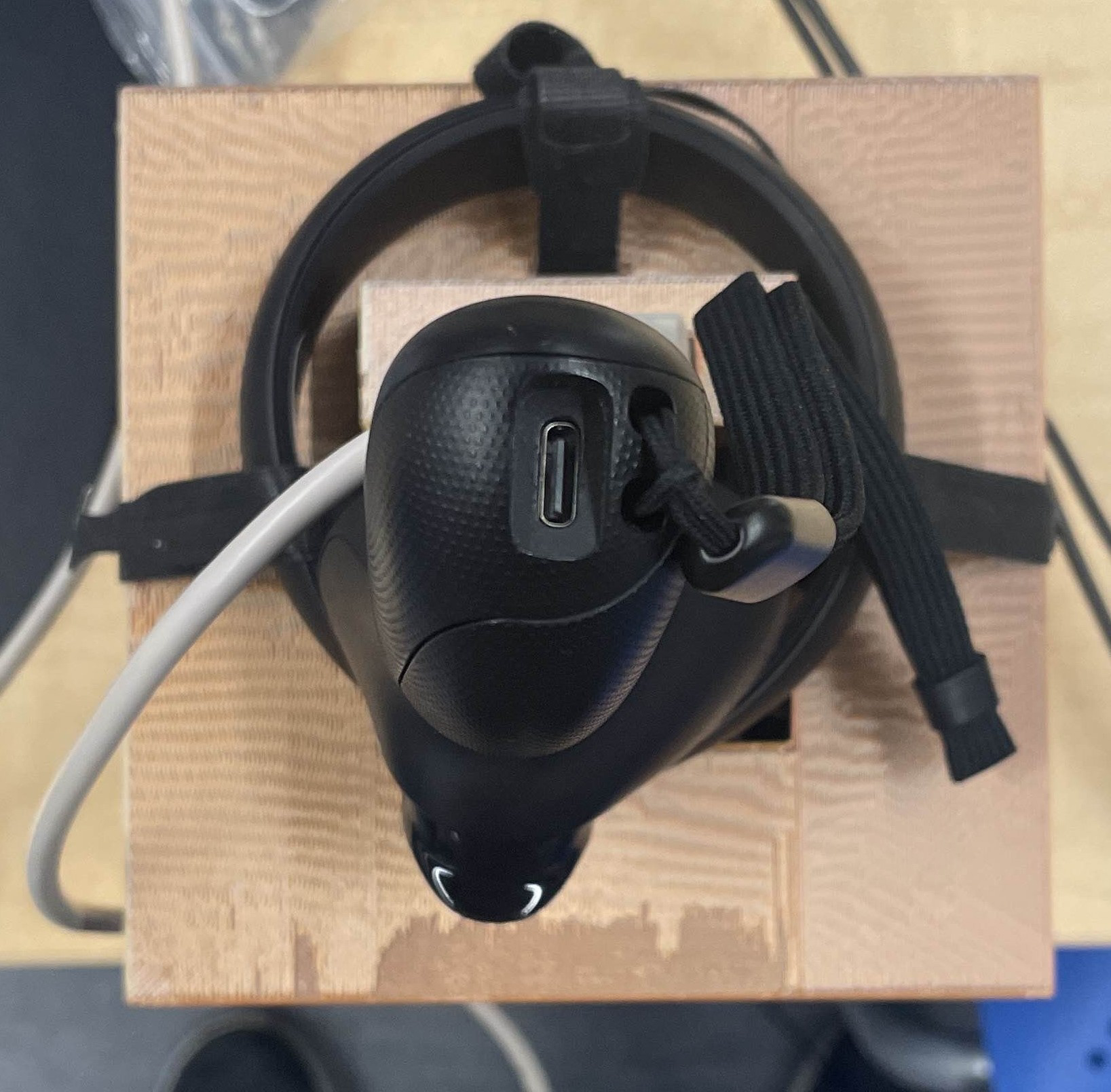
Underside - Handle
Instructions
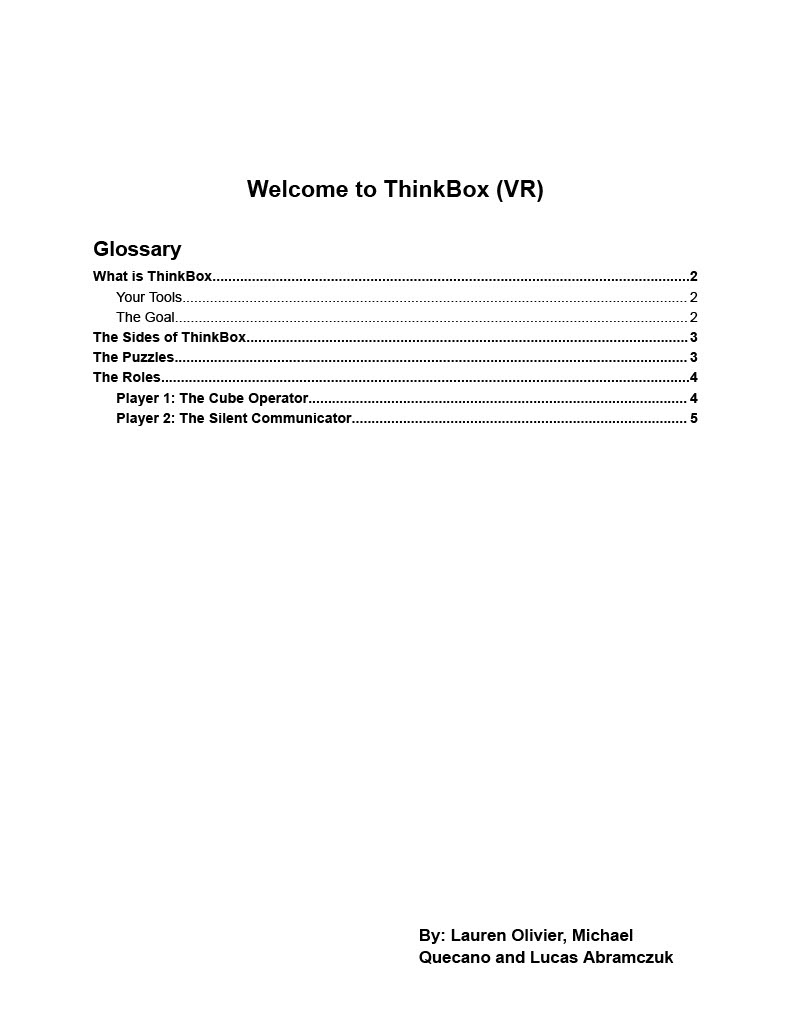
Page 1/5
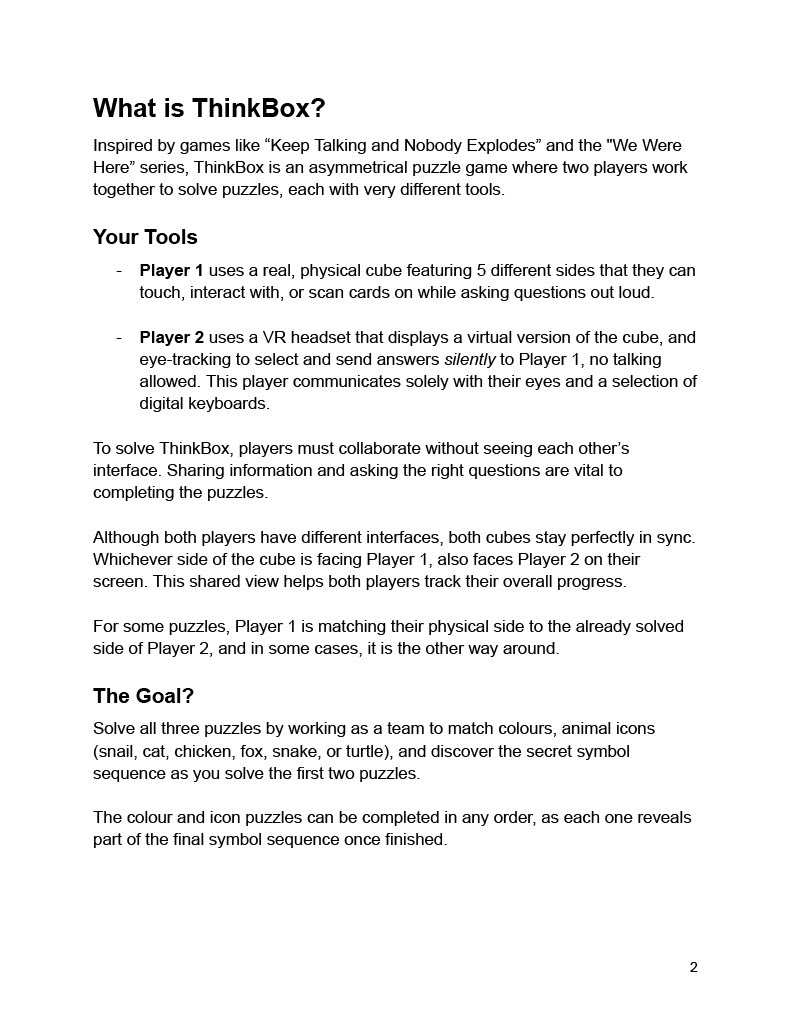
Page 2/5
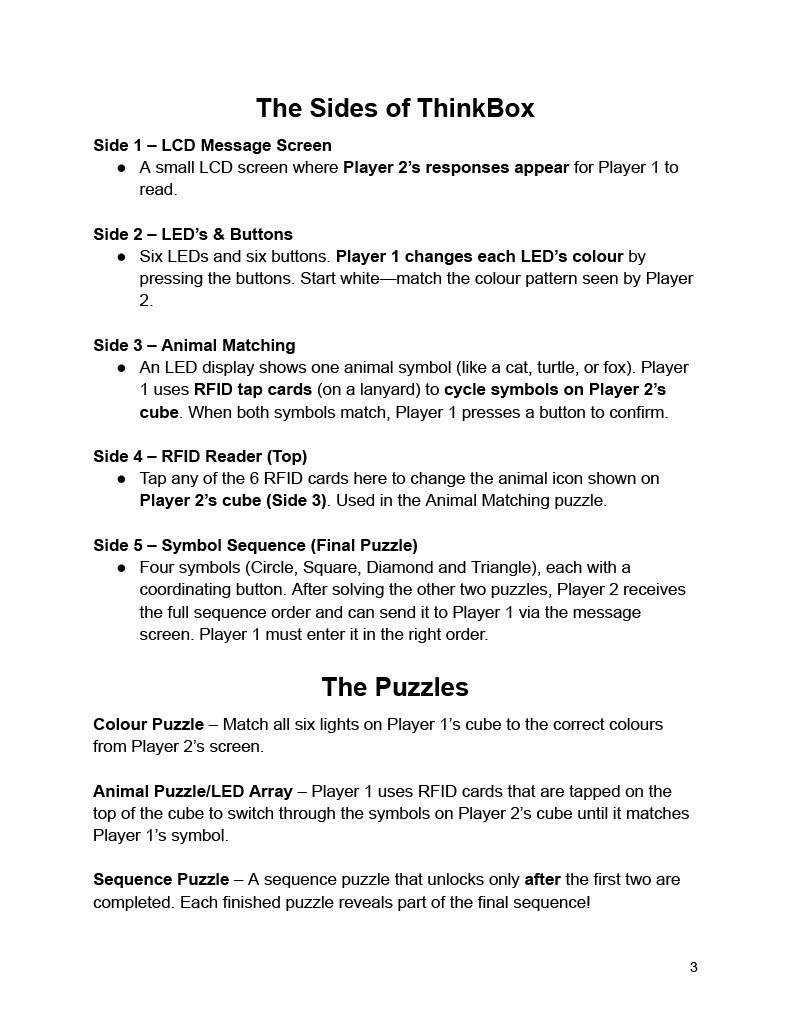
Page 3/5
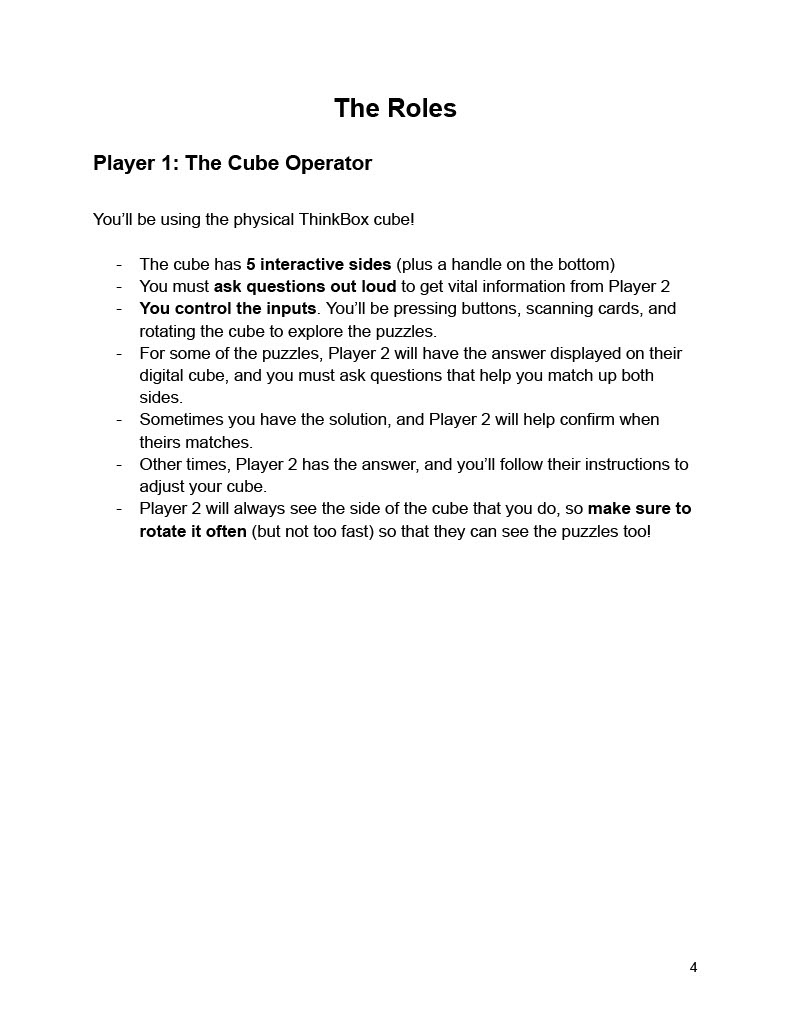
Page 4/5
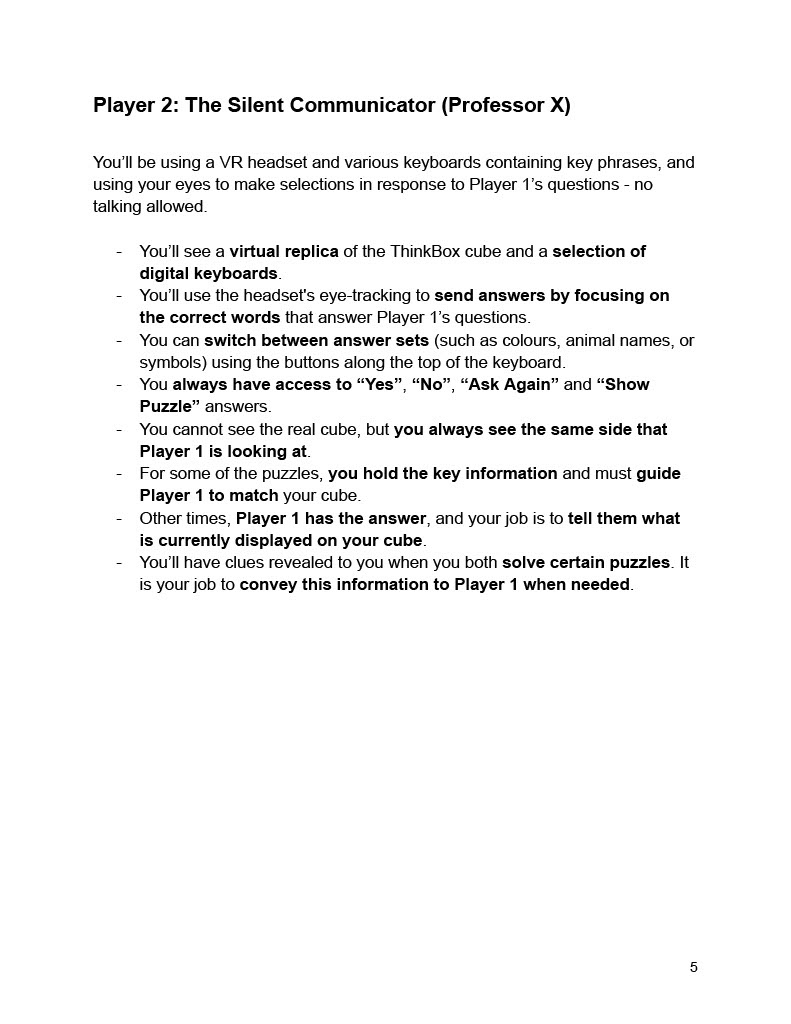
Page 5/5
Development and Prototype Progress
